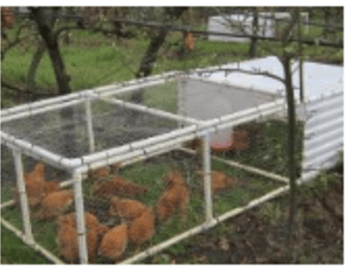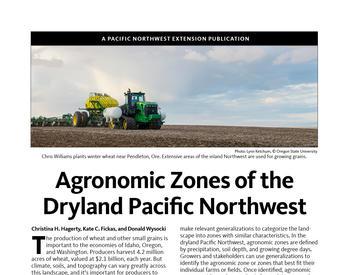A look at the risk of musculoskeletal disorders and how the science of ergonomics can help
I had an emotional conversation with a very young farmer (not even 30 years old) who had to leave farming due to disabling back pain associated with a musculoskeletal disorder. The farmer had worked in a position that required long repetitive tasks and had not known about the danger of musculoskeletal disorders associated with the job or the ergonomic practices that could have prevented them.
This farmer is not alone. Work-related musculoskeletal disorders are the leading cause of disability across industries, and farmers are at particularly high risk. Musculoskeletal disorders are injuries and disorders that affect the human body’s movement or musculoskeletal system (i.e., muscles, tendons, ligaments, nerves, discs, blood vessels, etc.). They are caused by prolonged exposure to physical stresses such as repetition, forceful exertions, kneeling, lifting, squatting, bending, vibrations and twisting.
When a worker is exposed to these physical stresses, they begin to fatigue. When fatigue continues past the body’s ability to recover, then they develop a musculoskeletal imbalance. If that imbalance continues and the body still doesn’t recover, then the musculoskeletal disorder develops.
Now, you may be thinking that the physical stresses listed sound just like a job description for most farm labor. Even as I write this, I am nursing a tweaked shoulder from a particularly vigorous weed whacking venture on my farm. The good news, as reported by the National Institute for Occupational Safety and Health, is that musculoskeletal disorders are preventable. There are tangible steps we can take to reduce the risk of musculoskeletal disorders on the farm and ergonomics plays a leading role.
What is ergonomics?
You may have heard about an ergonomic car seat or keyboard, but there is more to it than the design of products. Ergonomics is an applied science that aims to learn about human abilities and limitations. It applies those ergonomic principles to design workplaces, equipment and systems, so that they fit the people who use them.
Ergonomics aims to reduce stress on the body while increasing efficiency and comfort in the workplace. Specialists in the science of ergonomics have demonstrated that there are simple and cost-effective solutions that can have a significant impact on the health of farmworkers overall.
Why should we care about wear and tear on the body?
Pain should not be a regular part of a farmer’s job. The impact of musculoskeletal disorders (which can develop slowly over time) can result in permanent or long-term disability, lifelong pain and significant loss of income. For small farms where labor may be on the shoulders of only one or two people – this can destroy the farm business.
What is stopping us from protecting our health?
It is important to acknowledge the barriers to implementing ergonomic strategies on farms.
Some barriers are related to the belief that the pain is just "part and parcel" of the job. Sometimes there is even pride in those sore muscles at the end of the day. This attitude is a dangerous one, because it tends to gloss over the seriousness of musculoskeletal disorders and deprioritizes the solutions that could make farm work safer.
Many farming practices have been passed down through generations, and changing habits related to "how things get done" is difficult or is viewed as an inconvenience. Additionally, even acknowledging the presence of injury and symptoms can be a barrier. Symptoms are often ignored until they interfere with one’s ability to perform their job and by then the musculoskeletal disorders have taken root.
As a farmer myself, I must admit that I often take better care of my pruners than my own hands. When profit margins are slim, speed can take precedence over safety. I have been guilty of feeling shame when I slow down, even if it is to protect my body.
To counter some of these barriers we need to talk about the seriousness, cumulative impact and causes of musculoskeletal disorders and that farmer-focused ergonomics offer one way toward safer farm work. The cost associated with these changes should be viewed in relation to what can be saved in the long run, the farmer’s health and farm viability.
What can be done to prevent pain while farming?
Small changes on a daily basis can have a big impact. Multidisciplinary teams of researchers and extension staff across the country have collaborated to develop intervention and prevention programs with ergonomic approaches. More research is needed as the science of ergonomics is actually quite young, but we now have some practical alternatives and affordable strategies to counter the "back-breaking" norm.
For a comprehensive list of these strategies including the guidelines shared below, check out Simple Solutions for Farm Workers published by the U.S. Department of Human Health — Centers for Disease Control and Prevention.
Modifying tasks, changing routines, and finding the right equipment/tool (or modifying a tool) for the job can all help prevent musculoskeletal disorders. If tools and workstations are ergonomically designed — meaning designed so that they meet the physical capabilities of the worker — then injuries are prevented as a natural result of less repetition, improved posture and reducing the force used by the body.
Modify tasks and change routines to prevent pain
- Posture has a huge impact. Limit or eliminate the need for stooped work:
- Alternate with one knee.
- Redesign the job, if possible.
- Break up the job with other tasks.
- Move into opposite positions.
- There is a strategy of "reversal" — where you reverse the position you are in — even if just for 10 seconds to allow your body to recover and reset. So if you are stooped over, then you stand up and stretch back to reverse the action.
- Reduce long exposure to vibration or the need to be in one position. To do so, prioritize task rotation as much as possible. Standing causes legs to swell (more than walking), changing from standing to walking and back again is recommended.
- Take short breaks every 30 minutes and sit down when possible; sitting down, even for short periods of time, reduces the strain on the lower back and legs.
- Limit twisting and reaching. For example, be aware of where harvest containers are in relation to the body. Items should be within 17 inches of the worker’s body. Avoid placing needed tools or other items above shoulder height.
Find the right equipment or tool to stay healthy
- Allow a tool to do the work and make sure the tool fits the body. What is a good fit?
- A tool that supports good posture, such as one with a long enough handle so that you limit the need to stoop.
- If a tool requires force, the user should be able to grip all the way around the handle having thumb and forefinger overlap. Handle diameter should range from 1-3/8” for small hands to 2-1/8” for large hands, with an average of 1-3/4”.
- Well-designed tools will have handles 4–5 inches long, slip-resistant material on the handle and a spring to keep the tool open (reducing the need for additional force).
- For standing work, there is a recommended work station height (wash stations, pack tables, etc.). For men, this is typically 40–43 inches for light work and 36–39 inches for heavy work; for women, this is typically 37–39 inches for light work and 33–35 inches for heavy work.
- Consider tires and suspension on tractors/trucks to limit vibrations and impact on the body. Invest in motor vehicle seats with good seat positioning and lumbar support.
- When harvesting from or pruning trees, adequate ladder heights have a big impact.
- Lifting:
- Keep lifts between hand level and shoulder level. Avoid lifts from the floor or over shoulder level.
- Provide handles on containers.
- Redesign loads so they can be lifted close to the body.
- Provide dollies, pallet trucks or utility carts for objects that have to be carried more than a few feet. Provide roller conveyors for bags or boxes of vegetables or chemicals that are handled often. This will reduce the amount of lifting.
- Keep bag or box weight below 50 pounds.
More details on these strategies, musculoskeletal disorders and farm system design
- Simple Solutions for Farm Workers (NIOSH, Center for Disease Control and Prevention 2001)
- Preventing Musculoskeletal Disorders (OSHA Ergonomics)
- Easy Ergonomics: A Guide to Selecting Non-Powered Hand Tools (Center for Disease Control and Prevention)
References
- U.S. Department of Health and Human Resources, Public Health Services, Centers for Disease Control and Prevention, and the National Institute for Occupational Safety and Health. Simple Solutions: Ergonomics for Farm Workers (2001).
- Chapman, Larry, Meyers, James M. (2001). Ergonomics and Musculoskeletal Injuries in Agriculture.
- NIOSH. 1997. Musculoskeletal disorders and workplace factors. A critical review of epidemiologic evidence for work-related musculoskeletal disorders of the neck, upper extremity, and low back. Publication no. 97-141.
- Sestos (Partners in Agricultural Health, Module VIII) Chronic Musculoskeletal Disorders in Agriculture for Partners in Agricultural Health.
- Walker-Bone K, Palmer KT. 2002. Musculoskeletal disorders in farmers and farmworkers.

















